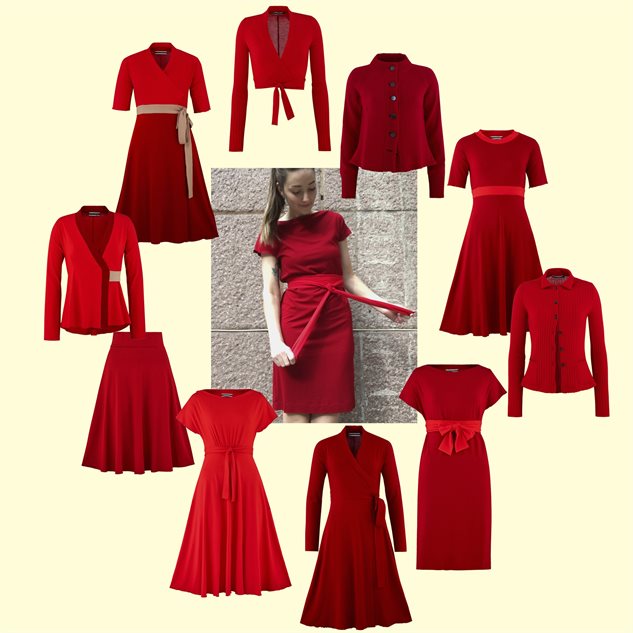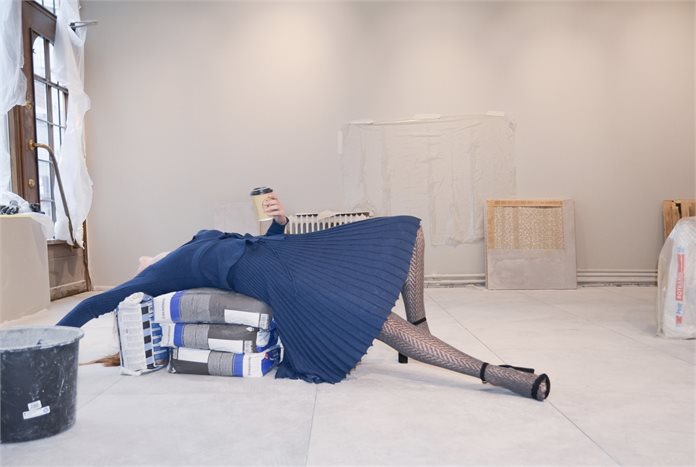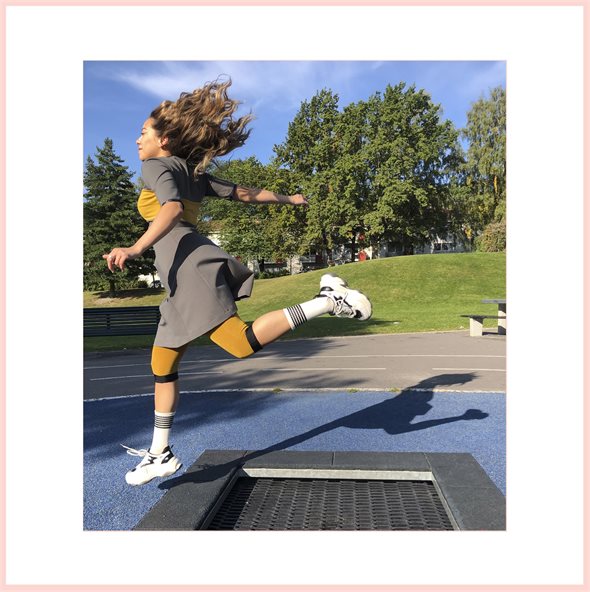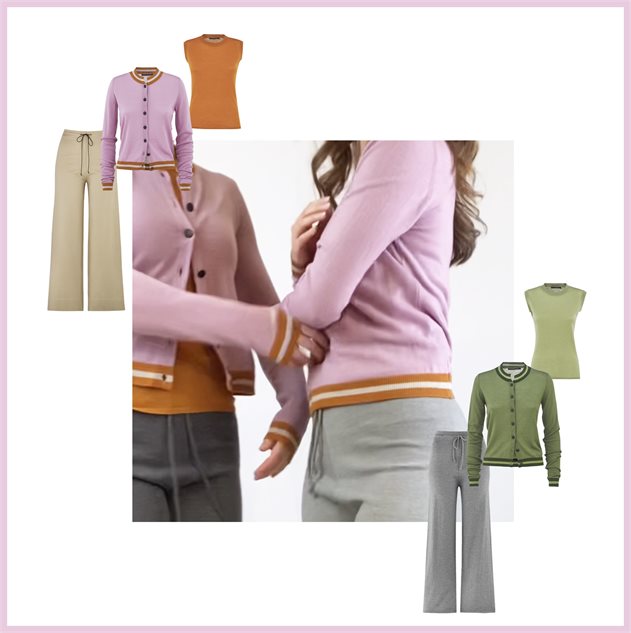Historie: Vendepunktet
Vendepunktet
“Hva spennende lager du til neste sesong? Når kommer denne kjolen inn igjen? Men denne er vel slik du alltid har? Favorittjakken er utslitt, lager du den opp igjen?”
Dette er kjente spørsmål som jevnlig kommer opp. Fra 2024 svarte jeg ikke helt ærlig på disse. For da hadde Mette Møller som dere kjenner merket kommet til et endepunkt eller snarere et vendepunkt.
Ironisk nok ikke fordi jeg hadde gått tom for ideer eller at lysten til å designe var borte. Etter 26 år med dette hadde jeg fremdeles en lyst og en driv i meg. Stoppet kommer fordi virkeligheten gjorde omstendighetene for trange og fattige til at jeg kunne fortsette på samme måte som før.
2019 var et av firmaets beste år. Både butikk og nettbutikk gikk strålende. Det var mange ansatte i sving, podcasten var i gang og vi hadde spennende planer for å utvikle bedriften videre. Så kom pandemien som et sjokk for oss som alle andre. Alt stoppet. Hva gjør vi nå? Vi fulgte ordre, lukket oss inne og trodde det skulle gå over på noen uker.
Men det gjorde det jo ikke.

(På bildet over er deler av kolleksjonen for sommer 2020)
I denne bransjen så avhenger leve/dø av hvor flink man er til å forutsi framtiden. Klærne du ser i butikkene i starten av en sesong ble planlagt 1-2 år tidligere. Hva vil kunden ha og hvor mange skal lages opp? Det å ha for lite varer kan være like ille som å ha for mye. Man må kjenne sin merkevare og sine kunder, allikevel er det et sjansespill.
Da pandemien slo inn hadde det akkurat kommet ny kolleksjon. Salget av denne skal betale for den som allerede er i gang og forberedelsene til den som kommer etter der. I tillegg kommer driften av butikken, husleie, skatter og avgifter og lønninger. Når pengehjulet uventet stopper opp, så blir det ubalanse. Spesielt når man ikke vet hvor lenge det kommer til å stå stille.
Det er da det er godt å ha en buffer,- som vi hadde. Men denne våren skulle vi flytte butikken. Et større lokale med bedre beliggenhet og gunstigere husleie, skulle pusses opp fra bunnen. Og bufferen var i stor grad satt av til dette.
For å spare penger, så ble de ansatte permitterte. Jeg tok den daglige driften selv i tillegg til jobben med kolleksjonene. På dette tidspunktet jongleres det 3 kolleksjoner på en gang. Jeg pakket netthandler og stod i butikken fra den åpnet igjen i mai 2020. I tillegg til dette forberedte jeg flytting, planla og igangsatte oppussingen av nytt lokale. For å få fart i økonomien, så startet jeg salget ekstra tidlig i juni. Det fikk såpass fart i økonomien at jeg kunne betale ut feriepenger til de ansatte og husleie. Men det er litt som å tisse i buksa for å holde seg varm. Overskuddet som skal lage grunnlaget videre er det avslaget på 30-50% man gir til kundene.
Pandemiperioden for min del var et kjør. Store, kjente oppgaver skulle løses i ukjent farvann med minimalt mannskap. Men det gikk det og. Da vi åpnet ny butikk var de ansatte tilbake og ny kolleksjon var på plass. Alle hjerter gledet seg og optimismen hos folket var til å ta og føle på, for nå kom livet tilbake!
Men det gjorde det jo ikke.

(På bildet over er et antrekk fra kolleksjonen fra høsten 2020. Bildet er tatt i den nye butikken da den fremdeles var under oppussing).
Å drive butikk og eget klesmerke denne perioden var så klart en utfordring. Ingen hadde egentlig bruk for min type klær på hjemmekontorene sine. Shopping mistet også sin sjarme med uforutsigbare åpningsperioder, munnbind, en-meter og håndspriting.
Men vi gjorde hva vi kunne med sosiale medier, klikk og hent og klarte oss bedre enn mange.
Som jeg nevnte tidligere, så drives bransjen av å å klare å forutse framtiden. I de to årene med pandemi, så trodde vi jo hele tiden det skulle gå over snart. Dvs til neste sesong, eller hvertfall til den etter der. Så kolleksjonene ble designet og produsert under forutsetning om at om 6 måneder, så går hjulet rundt som før.
Men det gjorde det jo ikke.
Resultatet ble at veldig store deler av kolleksjonene ble solgt på salg. Selv om vi av dette fikk nok til å betale for her og nå, så ble det mindre og mindre igjen til driften framover. Jeg sparte inn ved å ikke ansette nye når “gamle” ansatte sluttet. Isteden omfordelte jeg arbeidsoppgavene og tok mange av dem selv. Jeg sparte inn på å begrense kolleksjonene, de ble mindre omfattende og kom i mindre mengder.
Den første optimismen og gjenåpningsgleden kom aldri tilbake. Isteden gikk samfunnet i en slags flat overlevelsesmodus. Vi åpnet jo bare for at alt skulle stenges igjen. Vi fortsatte på samme flate vi også mens vi spiste av såkornet og ventet på normalen.
Men den kom jo ikke.

(Bildet over er fra høsten 2021 og et av mange nye krumspring vi tenkte skulle piffe opp vår sosiale mediefeed.)
Pandemi ble avløst av krigen i Ukraina. Den berørte oss ikke direkte, men den skapte en uro. Samtidig kom ettervirkningene av pandemien med inflasjon og renteøkning, deretter økte strømpriser.
Selv om man følte seg heldig og priveligert i forhold til veldig mange andre, så ble det tydelig jeg ikke kunne drive butikken og merket på tradisjonelt vis stort lengre. Prisene på produksjon og materialer hadde begynt å krype oppover og det ble mer krevende å få regnestykket til å gå opp.
Sommeren 2022 og vinteren 2022 hadde jeg ikke de sedvanlige store sesongssalgene. Planen var å bygge opp en rekke klassiske modeller som skulle holdes på en konstant pris. I tillegg til klassikerene skulle jeg lage mindre serier med litt mer fres i.
Det virket fornuftig.

(På bildet over er et utvalg av kollekjsonen fra våren 2023. Friske og fine farger og klassiske, komfortable plagg.)
Men fornuft reddet ikke dagen. Våren 2023 stoppet alt opp både på nett og i butikken. Folk hadde mer en nok med renter, økte matpriser og strømregningene. Samtidig økte mine produksjons og materialkostnader med ytterligere 40%. I praksis betyr dette at en og samme kjole som i 2019 kostet 1990,- og økte til 2350,- i 2022 ville koste 3350,- i 2023. Med synkende kjøpekraft i markedet, så er tallenes tale veldig klare.
Dette går ikke lengre.
Fra februar 2023 brukte jeg mye tid på å finne ut av hvordan jeg skulle løse dette. Man blir jo litt lammet når jobben ikke "vil ha deg" lengre etter 26 år. Men på en annen side skulle vel ingen tro dette holdt i 26 år heller? Mye av grunnen til at jeg har holdt meg flytende disse årene har vært evnen til å omstille, så nå må jeg gjøre det igjen.
Hva som er sikkert er at jeg ikke klarer eller ønsker å drive videre i formen dere er kjent med. To store kolleksjoner i året med full drift av butikk og nettbutikk med salg til både inn og utland. Det krever flere ansatte, store nok lokaler og penger til å satse før man kanskje får tilbake. Det er et stort ansvar jeg føler sterkt på. Å ha ansvaret for noen andres økonomi, å klare å betale moms, skatt og arbeidsgiveravgift. Å klare å betale leverandører og produsenter i tide. Å betale husleie og strøm. Å klare å sørge for at det ansatte har en god arbeidsplass, at bedriften klarer å ta imot sykdom uten at kundene merker noe til det. Når noe ikke går som det skal, så er det jeg som bedriftseier/designer/sjef som må ordne opp, ta skylden og løse problemet.
Slik ting er nå, så blir denne oppgaven for stor for meg. Jeg har klart det i 26 år, men nå slutter det kapittelet.
Men det som er interessant er at når dører lukkes, så åpnes andre. Kreativiteten min har funnet andre utløp og det er bare å ta fatt. Les mer om herfra og ut i bloggen "Hva skjer nå?"